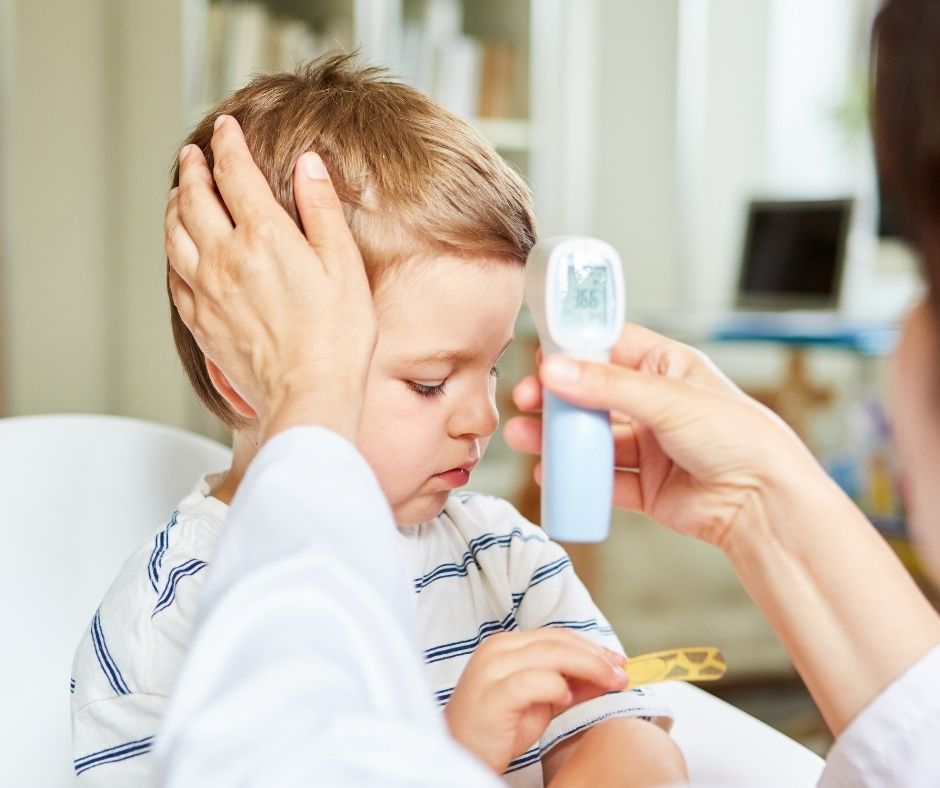WHAT COLOUR IS YOUR SNOT?
We are soon heading into the winter months where the usual bugs start circling again. It doesn’t seem to make that much difference if we stay home in a bubble or get back to normal life – sickness visits us, especially young children who have developing immune systems.
Whether you started your child in an early learning centre as a baby, or skipped childcare entirely, your child will go through the immune building cycle of illness and recovery. This usually happens when they enter an environment with lots of other children, at childcare or at school.
We spoke to a local doctor to clear up some of the frequently asked questions. Some of it was surprising - especually when it comes to runny noses.
Tell us about snot. Thick and Green or clear and non-stop, when should we be sending children home?
Snot is the mucus produced by our nose cavities. When we have an infection (such as a cold or flu) our bodies make more snot to trap and get rid of the germs. As most of us parents intimately know, snot comes in all kinds of colours and consistencies. It is very typical for snot to be clear and runny at the start of an illness and this is very typical with viral illnesses.
It is a common myth that a yellow/ green snot is “bad” and means more severe or bacterial infection- this is not true. The green/yellow colour in snot is actually a sign that our immune system is sending white blood cells (our infection fighting cells) to clear the infection. It is a normal part of the healing process and does not indicate that a cold is more severe or that a child is more infectious. The overall picture of how well/unwell your child looks and whether there are also other signs of infection such as a temperature are much more important in determining how “sick” a child is. In fact, often we are more infectious in the earlier stages of the illness when we have lots and lots of clear runny snot, because we are often also coughing/sneezing and this combined with a larger quantity of snot means we are more likely to spread the germs.
Any snotty nose or cough lasting more than 2 weeks (even in an otherwise well looking child) warrants a check by a GP.
As we know, little people are not very good at covering their mouth when they cough and sneeze and are very good at putting EVERYTHING in their mouths. Therefore, if our little people are unwell with cold or flu symptoms and are excessively sneezing and coughing and needing their nose wiped for snot very frequently- they are generally considered contagious to others and so it is best to keep them home.
Teething and temperatures. . . Does teething cause high fevers? Everyone is told a different story, and it is often the first reason we are given as to why a child has a fever.
You can find evidence to support both sides of this argument. However, there is general consensus that teething alone will not cause a high temperature (37.8 or over). So, if a child has a high temperature OR any other signs of infection (runny nose, cough, diarrhoea etc) then you need to assume the temperature is caused by something other than teething.
Early learning settings often get a bad rep for spreading sickness, why does it seem so much more prevalent in ECE settings?
Because our little people are yet to learn about infection control and their immune system is still “learning”. We have all experienced over the past couple of years how easily viruses and bugs spread generally- we have to be mindful that young children don’t reliably know how to cover their mouths when they sneeze or cough, or to wash their hands afterward, and that EVERYTHING seems to somehow end up in their mouths.
When you compound this with immune systems who are just for the first time having to deal with various colds or flu’s, you unfortunately have the perfect storm for what feels like constant illness.
We also have to be mindful that often we can be contagious with an illness even before we are showing symptoms. Having a completely bug free ECE is just not possible.
A post COVID world has definitely complicated the picture and we have to acknowledge how hard it has been for families to deal with the different sickness thresholds and uncertainties that have come with these strange times.
Has COVID-19 impacted on other illnesses being more serious or people getting sicker than normal from what you are seeing as a GP, why would this be?
People are moving around a lot more, the borders are open, people are socialising more, and it is winter- when we typically see these waves anyway (we also haven’t had great flu vaccination rates this year but a particularly nasty strain of Influenza). We are still learning about COVID as we go, however waves of unwellness like we are seeing at the moment are not unique to this year, we also have COVID floating around as well to deal with.
Is there anything that we can do or that our parents can do to support our children through this coming winter?
Encourage a varied diet with 5+ fruit and veges a day. Think about how much Vitamin D you are getting (important in immune function) ideally by getting 10-15 minutes of direct sunlight each day (or talk with your GP or pharmacist to see if vitamin D supplements are right for you- especially important for breastfed babies under 12months and those with darker skin pigmentation, or those who burn too easily to spend 10-15mins in the sun) and try to encourage quality sleep. Over the counter supplements such as vitamin C and probiotics have limited evidence, but you can consider these. Talk with your pharmacist. Model and encourage good hygiene practices (coughing or sneezing into elbows, washing hands before eating etc).
Finally, consider getting yourself and your family vaccinated for the routine vaccination schedule along with influenza. Funded flu vaccines for 3-12 year olds has JUST been announced for the year- so if your tamariki fit into this age band, I would highly recommend considering a flu vaccine (even if you have already had one type of flu, the vaccine covers multiple strains that are predominant this season). Unfortunately, flu vaccines are not currently funded for children under 3 or adults under 65 unless they have a respiratory diagnosis- they are usually about $30 per vaccine so still worthwhile for some families.
Posted: Monday 20 March 2023


